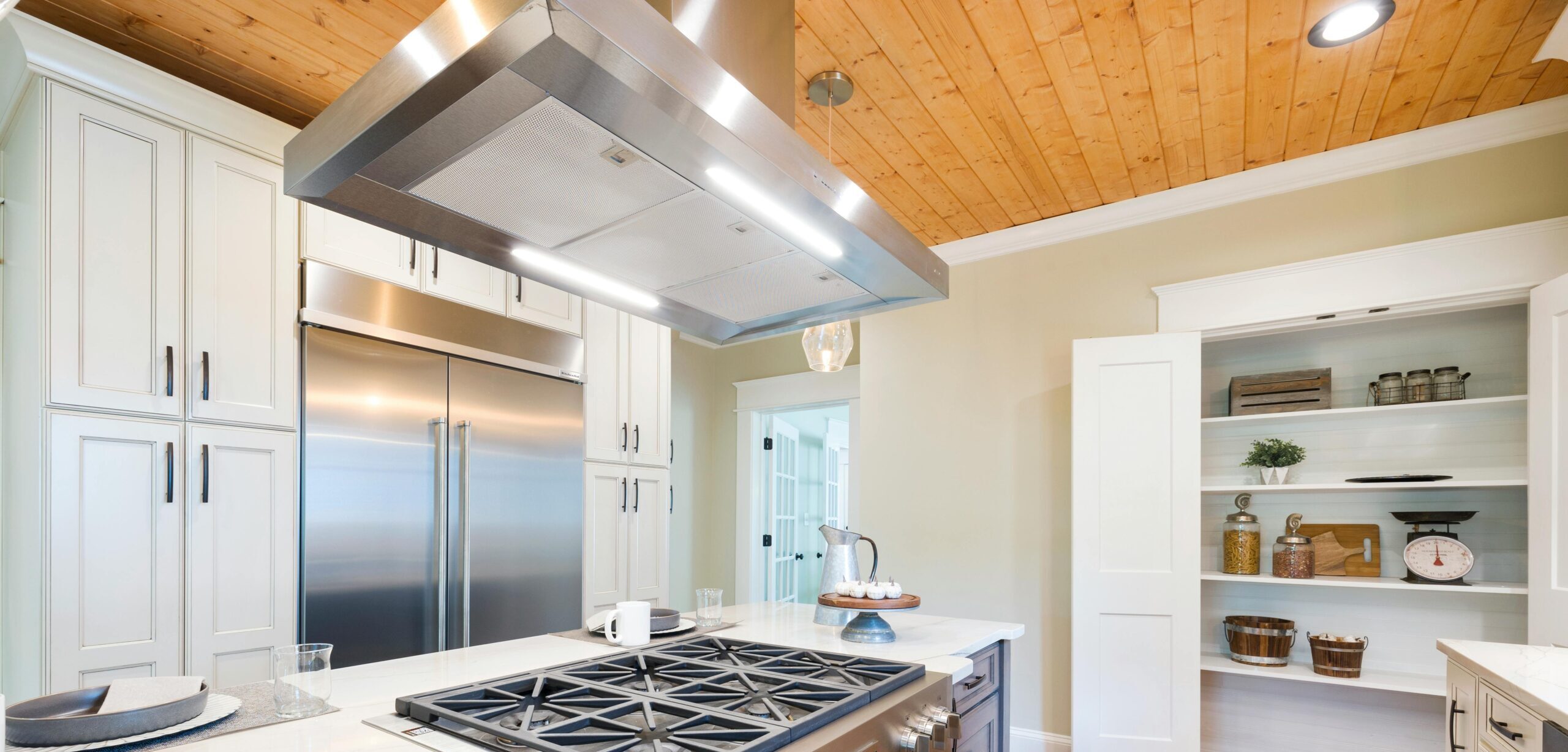
Guide to Kitchen Range Hoods
A kitchen range hood is more than just a functional appliance—it’s a crucial element for maintaining a clean and healthy cooking space. By effectively removing grease, smoke, heat, and odors generated during cooking, a range hood enhances indoor air quality and prevents buildup on kitchen surfaces. This guide covers various types of range hoods, how to install them, important features to look for, and tips to keep them working well in your kitchen.
What Does a Kitchen Range Hood Do?
A kitchen range hood, also known as a vent hood or exhaust hood, serves as a ventilation system designed to extract airborne contaminants from your kitchen. As you cook, it captures grease, smoke, heat, and odors, preventing them from spreading and settling, which helps maintain a cleaner kitchen and reduces the need for extensive cleaning. This not only improves air quality but also prolongs the life of your kitchen appliances by reducing grease buildup and potential damage.
What Are the Most Common Types of Kitchen Range Hoods?
There are several types of kitchen range hoods to suit different kitchen setups and ventilation needs:
Ducted Range Hoods
Ducted range hoods are highly effective at keeping your kitchen air clean and fresh. They vent cooking pollutants directly outside through ductwork, preventing them from recirculating in your home. This type of range hood is powerful in removing grease, smoke, and odors, ensuring better air quality and a more comfortable cooking environment.
Ductless Range Hoods
Ductless range hoods are a flexible option for kitchens where installing ductwork is challenging. Instead of venting air outside, they use filters to trap grease, smoke, and odors before recirculating cleaner air back into the kitchen.
Convertible Range Hoods
Convertible range hoods offer versatility by allowing you to use them as either ducted or ductless units, depending on your kitchen setup. This flexibility makes them suitable for different cooking environments and home layouts.
Where Are Kitchen Range Hoods Usually Mounted?
Kitchen range hoods can be mounted in various locations depending on your kitchen layout and cooking setup. Under cabinet hoods are positioned directly above the cooktop, providing space-efficient ventilation that captures steam, smoke, and odors efficiently. Wall-mounted hoods are installed against the kitchen wall, ideal for kitchens with stoves positioned against a wall, offering powerful ventilation directly over the cooking area. For kitchens with islands, ceiling-mounted island hoods are suspended from the ceiling, ensuring effective ventilation over cooking surfaces without obstructing sightlines.
Various Features to Consider When Selecting a Kitchen Range Hood
Choosing the right features is essential to ensure your kitchen range hood meets your ventilation and usability needs. Higher CFM (Cubic Feet per Minute) with adjustable settings determines the hood’s airflow capacity, crucial for effective ventilation based on your cooking habits and kitchen size. Sone rating measures the noise level during operation, with lower sone ratings indicating quieter hoods, ensuring a more comfortable cooking environment. Features like heat sensors automatically adjust fan speed based on cooking temperatures, maintaining optimal air quality and energy efficiency.
What Are the Different Finishes Kitchen Range Hoods Come in?
Range hoods for kitchens are available in different styles to match how you want your kitchen to look and feel. Stainless steel hoods are popular for their modern look, durability, and ease of maintenance, making them ideal for contemporary kitchen styles. Copper hoods, on the other hand, add a warm, rustic charm to the kitchen while offering antimicrobial properties that contribute to a cleaner environment. Many range hoods also come in different colors, allowing you to customize and coordinate with your kitchen décor effortlessly.
Installing Your Kitchen Range Hood
Installing your kitchen range hood correctly is very important to make sure it works well and is safe to use. Make sure your hood vents air outside your house to remove cooking fumes effectively and keep indoor air clean. Avoid venting into crawl spaces or attics to prevent moisture buildup and fire risks. Installing your hood correctly ensures it works safely and lasts longer, maintaining good performance.
Maintaining Your New Kitchen Range Hood
Keeping your kitchen range hood in good shape requires regular maintenance to make sure it works well for a long time. Changing filters regularly, especially after cooking greasy foods, helps keep the air clean and prevents blockages. Additionally, cleaning the hood regularly with a combination of warm water and soap helps prevent grease and dirt buildup. Adhering to these maintenance steps, in addition to those outlined by the manufacturer, helps keep your kitchen clean and healthy.
Here to Assist You Along Your Kitchen Renovation Journey
If you need a kitchen range hood properly installed, you could enlist the services of a handyman. Or, if you are calculating the many costs that go into a well-planned kitchen renovation, a local remodeler can assist you in choosing the right kitchen range hood for your needs. No matter your goal, we at Remodeling.com are happy to help. We invite you to browse our expansive network for a qualified professional in your area!
